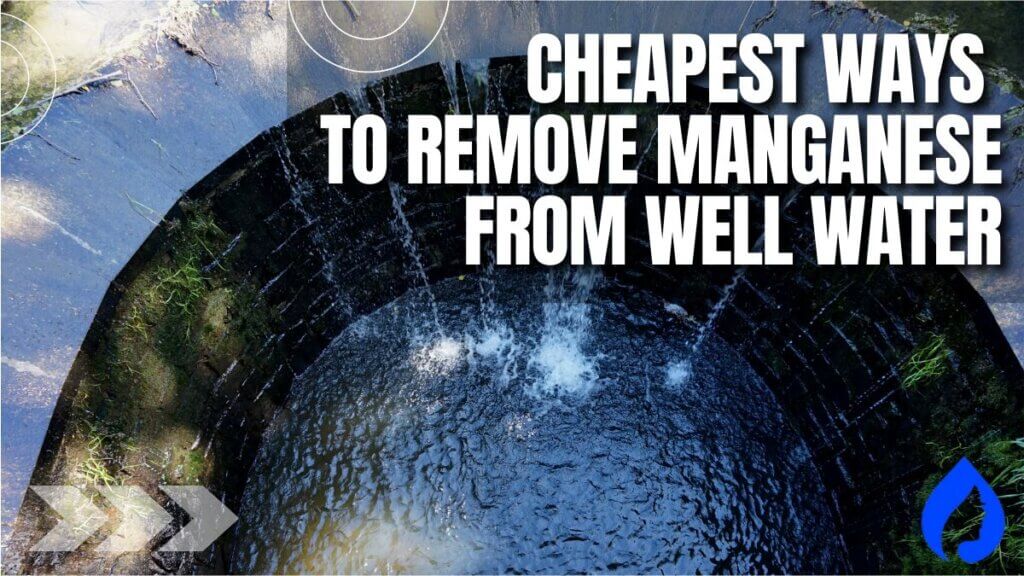
As per the Environmental Protection Agency, if the amount of manganese in your water exceeds 0.05 mg/L, it can lead to neurological disorders.
So, if you are worried about the cheapest way to remove manganese from well water, I’ve got you covered.
Chemical oxidation, activated charcoal, reverse osmosis, and water softening are some of the most efficient methods of eliminating unwanted manganese from well water.
Now, let’s dive right into the details:
How to Remove Manganese From Water: Common Methods
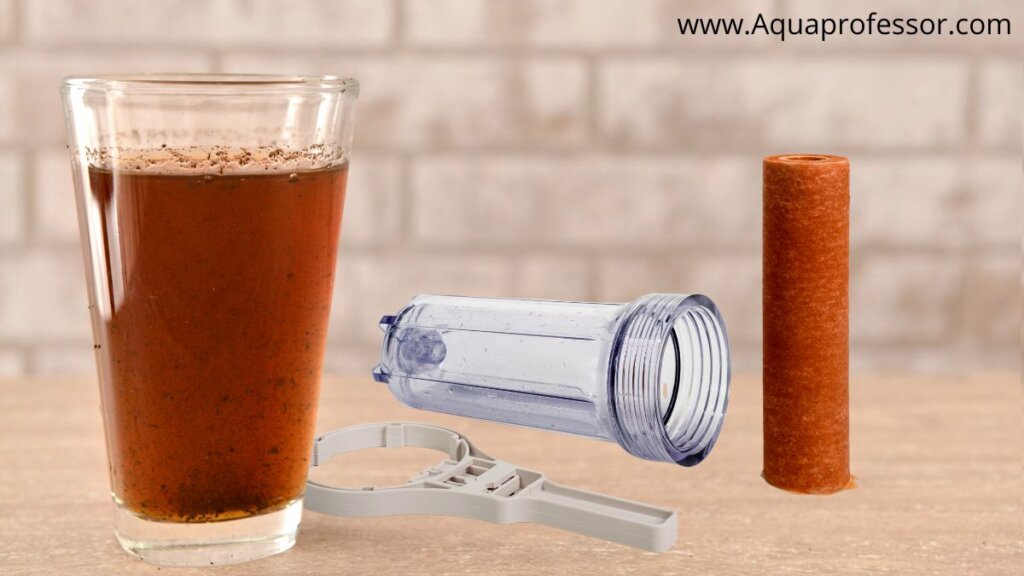
Manganese is challenging to remove from water because it depends on the conditions like water’s pH, presence of other minerals, and level of oxidation.
Various technologies are present to reduce manganese levels in the water. However, to select the most effective treatment, you should get the total level of iron, manganese, hardness, alkalinity, and pH of your water supply tested by a state-certified laboratory.
The test results will help you choose the most feasible and cost-effective water treatment solutions to address the issue.
We’ve compared the costs and accessibility of various manganese water treatment options so that you don’t have to.
Methods to Remove Manganese: Comparison Table
| Methods | Mn Removal | Accessibility | Cost (in $) |
|---|---|---|---|
| Oxidizing Filters | 10 mg/L | Yes (online and offline stores) | $800-$1K |
| Air Injection Filters | 90% of contaminants | You need to hire professionals | 1k-2k |
| Under-sink RO | 90% of the contaminants | Yes – Online and offline | $50- $200 |
| Ion-exchange Water Softeners | 5 mg/L | Mostly online | $40-$3k |
| Ozone Water Filter | 0.43 ppm ozone/1 ppm iron | Yes – online and offline | $500-$1k |
| Catalytic Carbon Filter | 4 mg/L | Mostly online | $500 to $1k |
| Using Bio-filtration | 50 mg/L | Not available easily in stores | $1k-$2k |
Also Read: Cheapest Way To Remove Iron From Well Water
Oxidizing Filter
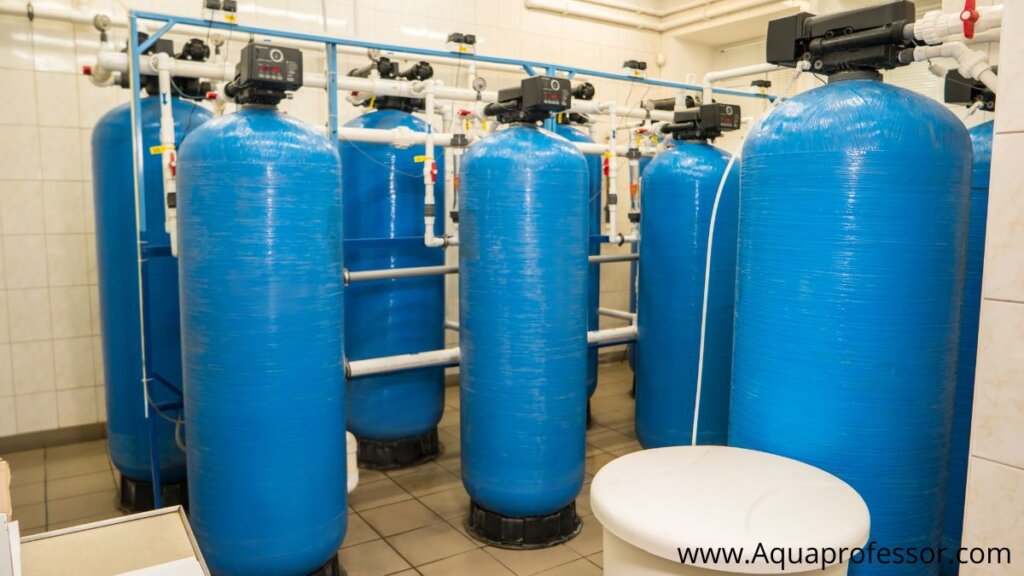
If the combined levels of iron and manganese in well water are more than 10 mg/L, oxidation filtration is the best treatment method.
This procedure involves adding chemical media like manufactured zeolite, plastic resin beads, and manganese-treated green sand to transform any dissolved iron and manganese into their solid, oxidized forms, which can be easily removed from the water by filtering.
Backwashing filters (like potassium permanganate or hydrogen peroxide) will capture the oxidized manganese and safely remove it from the water.
Most oxidizing filters remove up to 10 mg/L or 75–90% of the iron or manganese in the water.
The prices of such filters typically range from $750 to $5,000 depending on the quality and flow of the water.
⚗️Ion-exchange Water Softeners
Water softeners (not conditioners) can remove hard-water minerals like calcium and magnesium through ion exchange. During the ion exchange process, calcium and magnesium are drawn to the softener resin bed, causing sodium ions to be released and thereby removing water hardness. However, frequent backwashing is essential for maintenance.
The water softening method is best when:
Rest assured, if your manganese content in well water is high after testing, but water TDS is low. Water softeners (not conditioners) will scientifically eliminate the manganese contamination.
Conventional water softener prices could range from $400 to $3000 based on how many people you have at home.
Air Injection Filters.
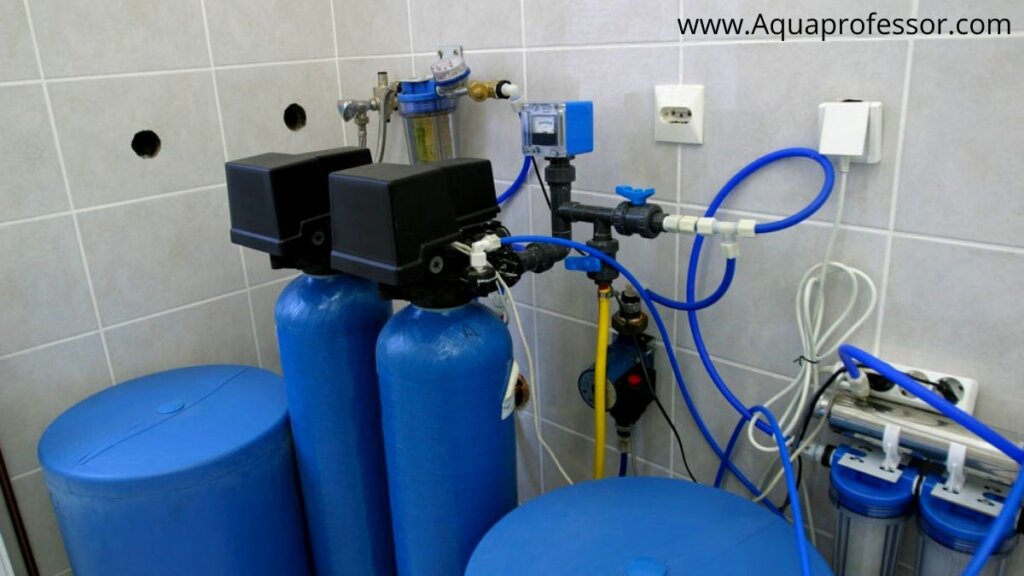
The air injection filter system is budget-friendly yet fully efficient in removing not only manganese but also iron impurities and hydrogen sulfide from well water. The system develops and maintains a pressured air pocket at the top of the tank to oxidize manganese, iron, and sulfur.
The oxidized elements are trapped in the media bed, removed with a quick media backwash from the filter, and collected in the filter tank. Aeration requires the use of an iron filter. Iron filters work similarly to water softeners.
The cost of aerating your well water will be affected by the size of your house. If you have a large house, aerating your well water will be more expensive than a small one.
Under-Sink RO
Under-sink RO is one of the popular treatment methods for most of the contaminants affecting the well water supply. There are various stages in this purification system that involve the semi-permeable filter layer onto which the water is pressed.
Only water particles can pass through the RO membrane, and the remaining contaminants are left behind and flushed out of the chamber with effluent.
Under-sink reverse osmosis systems also eliminate many bacteria, viruses, and other germs, providing clean drinking water. Most organic chemicals and over 90% of ionic contaminants are typically removed.
They are simple to use and widely accessible in your neighborhood market. They cost around $50-$200, as of the latest estimates in 2024.
Also Read: Advantages And Disadvantages Of Well Water
Catalytic Carbon Filter
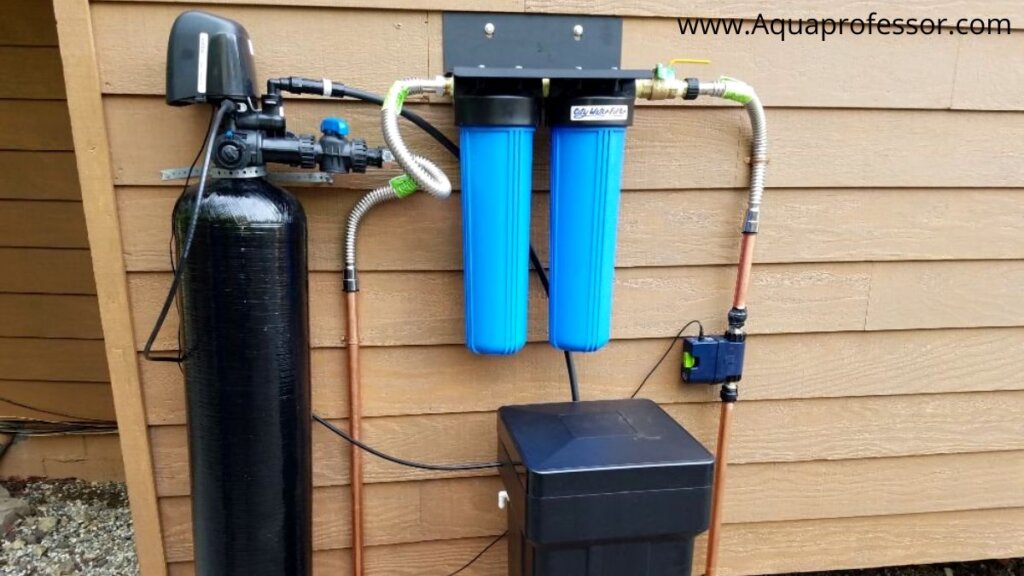
Catalytic carbon is another effective option that absorbs, oxidizes, and filters dissolved iron and manganese in a single process.
First, the oxidation stage of filtration is optimized by the catalytic carbon layer. After that, the carbon filter moves on to remove the hardened content. Catalytic carbon needs a minimum of 4.0 mg/L of dissolved oxygen in the input water.
Activated carbon treatment is preferred due to its versatility and effectiveness. It eliminates all other impurities and provides clean water.
The devices cost between $50 and $500.
Biofiltration
Biofiltration can solve the manganese problem through bio-oxidation, particle separation, and adsorption.
Biofilters can reduce the number of contaminants in a fluid stream with the help of microorganisms attached to an organic/inorganic medium. It may effectively purify water contaminated with organics and metals, thanks to the microorganisms clinging to it.
These findings demonstrate that manganese can be removed from water by direct biofiltration at pH 6 below 50 g/l. Biofilters are mostly used to purify water on a big scale.
For the same reason, they are more expensive than the alternative option, costing between $1000 and $2,000 each. To use a biofilter, one might need professional guidance.
Ozone Water Filter
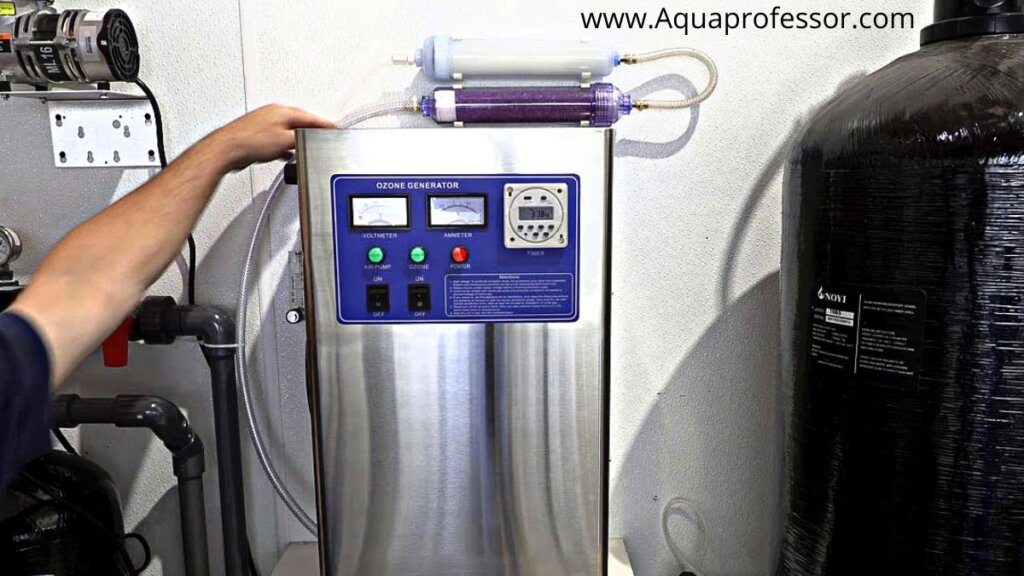
Ozone, like chlorine and potassium permanganate, is a powerful oxidant. Ozone water treatment is a water filtration process that uses ozone as an oxidant to decrease pollutants in water.
Ozone reacts with other compounds, accepting their electrons, and oxidizes manganese into solid particles that can be mechanically filtered from the water. They could also be useful in dealing with several issues related to water quality (i.e., bacteria and metals).
Ozone is effective throughout a wide pH range; therefore, even if your water is acidic, the manganese removal efficiency of ozone water treatment will not be compromised.
Home ozone water treatment systems range in price from a few hundred to a few thousand dollars. Ozone units are typically more expensive than other traditional treatment solutions.
Other Methods
People try other methods, like polyphosphates, but they are ineffective. Polyphosphates, a mixture of phosphoric acid and other chemicals surrounding iron, are advertised as “trapping” agents in water filtration systems.
However, this treatment won’t eliminate the metallic and bitter taste caused by high iron or manganese levels, as the elimination of iron is unsuccessful. It shouldn’t be used if the dissolved iron concentration is greater than 2 mg/L or if the combination of iron and manganese is greater than 3 mg/L.
The water will feel unhealthy and may become diarrheal if elevated phosphate levels are added. Polyphosphate can also be destroyed in a water heater, releasing iron that has been stored. Though under ideal conditions, the efficacy of manganese removal using polyphosphates varies greatly.
Also Read: Top 5 Iron Filters For Well Water
Manganese In Well Water: Sources, Safe Levels, & Health Risks
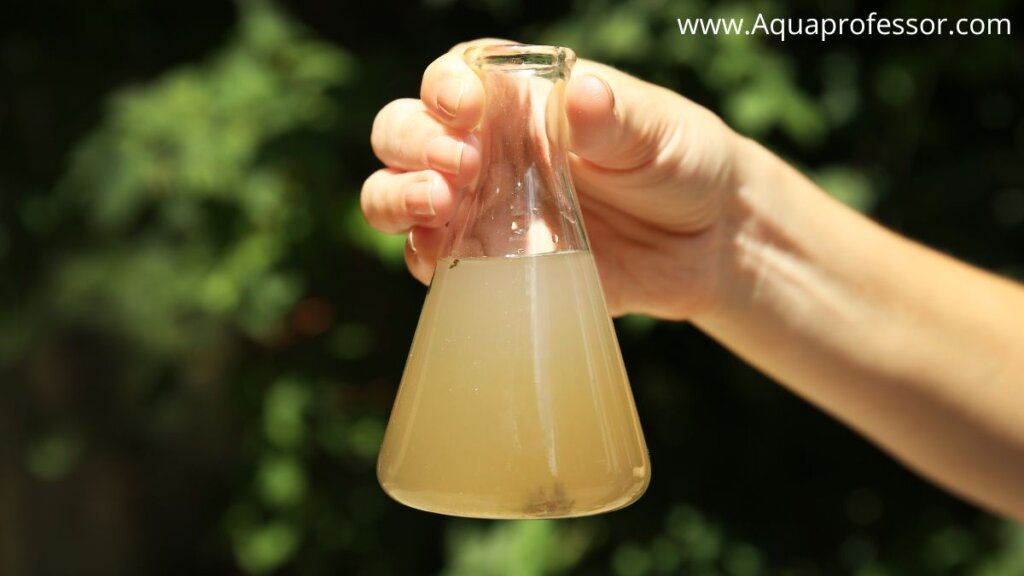
Manganese, a naturally occurring mineral, can be found in the sediment, rocks, and soil. This useful metal can be found in various grains, fruits, and vegetables and is important for human nutrition.
At the molecular level, it can cause more than 300 enzyme reactions that support bodily processes. Therefore, it makes sense that it is a crucial component in creating narcotics and other medicines.
Although being a necessary nutrient for humans with several health benefits, more than 0.05 mg/L in water can have “potential neurological defects,” as specified by the EPA document.
Types of Manganese In Well Water
We’ll dive into the potential health risks of excess manganese in just a bit, but let’s now understand the two types of manganese found in water.
⚛️Manganous Manganese
The first and most popular type is manganous manganese. Like salt or sugar dissolved in water, manganese is also dissolved in this form. Manganous manganese must first be “precipitated” and removed with a filter. It is also called unprecipitated manganese.
You can also use an ion exchanger water softener to treat Manganous Manganese.
⚛️Manganic manganese
Water may turn dark due to manganous manganese precipitating out of the solution and solidifying after that. This form of manganese is called Manganic manganese.
Manganese that has precipitated is simple to remove with a filter but difficult to remove with a water softener.
How Do Iron & Manganese Get into Wells?
Also Read: Here's How RO Removes Lead
Safe Levels of Manganese

According to Environmental Protection Agency (EPA) rules, no individual should be exposed to more than 0.3 mg/L of manganese in drinking water over their lifetime as it can be dangerous for human health. Infants under six months should not drink tap water containing more than 0.3 mg/L for 10 days per year.
The Environmental Protection Agency (EPA) categorizes iron and manganese as secondary pollutants.
For those who don’t know:
Substances that can change drinking water’s taste, odor, and color are referred to as secondary pollutants.
Manganese darkens water, causes water filters to turn black, and imparts a bitter flavor or a bad taste to water. Drinking water with a high manganese concentration often has a metallic flavor that is extremely unpleasant.
It may be detectable in water at concentrations greater than 0.05 mg/L. The water will have a brown appearance and metallic taste at this level. It may leave black deposits or stains on sinks and bathroom fixtures.
⚠️Health Risks of Excess Manganese
Numerous neurological and psychological problems are brought on by long-term exposure to high Mn. This is because the brain cannot effectively eliminate excess Mn, whereas the body can do so, mostly through the gut and liver.
Manganese buildup in those with cirrhosis or liver failure may contribute to neurological issues and Parkinson’s-like symptoms.
It also causes cognitive issues, pneumonia (caused by lung damage), and kidney disorders. It may produce neurological disorders such as memory, motor abilities, and attention deficits.
More Questions On The Cheapest Way To Remove Manganese From Well Water
Does boiling water get rid of manganese?
Absolutely not. It can make the matter even worse, as some water will be evaporated, causing manganese molecules, other metals, and elements to become more concentrated. The methods mentioned in this guide are the best ways to remove manganese from water.
How long does manganese stay in the body?
Manganese has a relatively long life in human tissue than in human blood. This is because it collects significantly in bone, with a predicted period of 8-9 years in human bones. However, individual traits like age, sex, geography, genetics, and pre-existing health concerns can all significantly impact how long it affects our bodies.
Which individuals are most at risk for manganese toxicity?
Individuals with a hepatic malfunction, patients with major medical disorders, and young children (particularly those under the age of 10) are more vulnerable to hazardous buildup in their bodies from the elevated level of manganese in the water.
Do iron and manganese occur together in well water?
Iron and manganese are two associated elements that might be problematic in drinking water. Iron is more prevalent than manganese, yet the two are frequently found together. Groundwater contains both iron and manganese combined; however, manganese is typically found at considerably lower concentrations than iron.
How do you clean manganese out of pipes?
Shock chlorination is a popular method for manganese and iron removal in pipes. It involves putting a chlorine combination directly into your well and thoroughly flushing that chlorinated water through your home’s water pipes and other related components.
Adarsh is a Health & Nutrition Sciences graduate with expertise in environmental health. He is associated with ventures like Glacier Fresh Filter and Simpure Filter Systems. Through Aqua Professor, he intends to provide helpful information to every home to help them make smarter decisions.

Hello Adarsh,
I have lived in Cape Breton, Nova Scotia, Canada in an old mobile home on 1 acre of land for 1 year now. I am retired.
The house has a drilled well but the water has a high level of manganese/iron (.6 manganese) so I don’t drink it, however I’d like to when all the plumbing, hot water tank & bladder gets upgraded. I also have a septic system so have been told a salt systems is not good to drain into it.
I am interested to eliminate the manganese/iron by the smallest most efficient & cheapest method as the current copper pipes are totally ruined, and in some cases blocked, and very little water comes out of my shower.
I’ve read the information supplied. Perhaps I should get the water tested again so I know what type of manganese I have. The test also didn’t say the PH level.
Is there anything else I should know?
Regards, June
Hi June,
Thanks for reading our blog. You can check our iron filter recommendations for guidance: https://www.aquaprofessor.com/best-iron-filter-for-well-water And yes, you should use salt softeners in septic systems with caution (in case you’ve hard water as softeners can’t remove more than 1 ppm iron).
Opting for modern “demand initiated” softeners and using potassium salt instead of sodium can come to your rescue. Hope it helps!